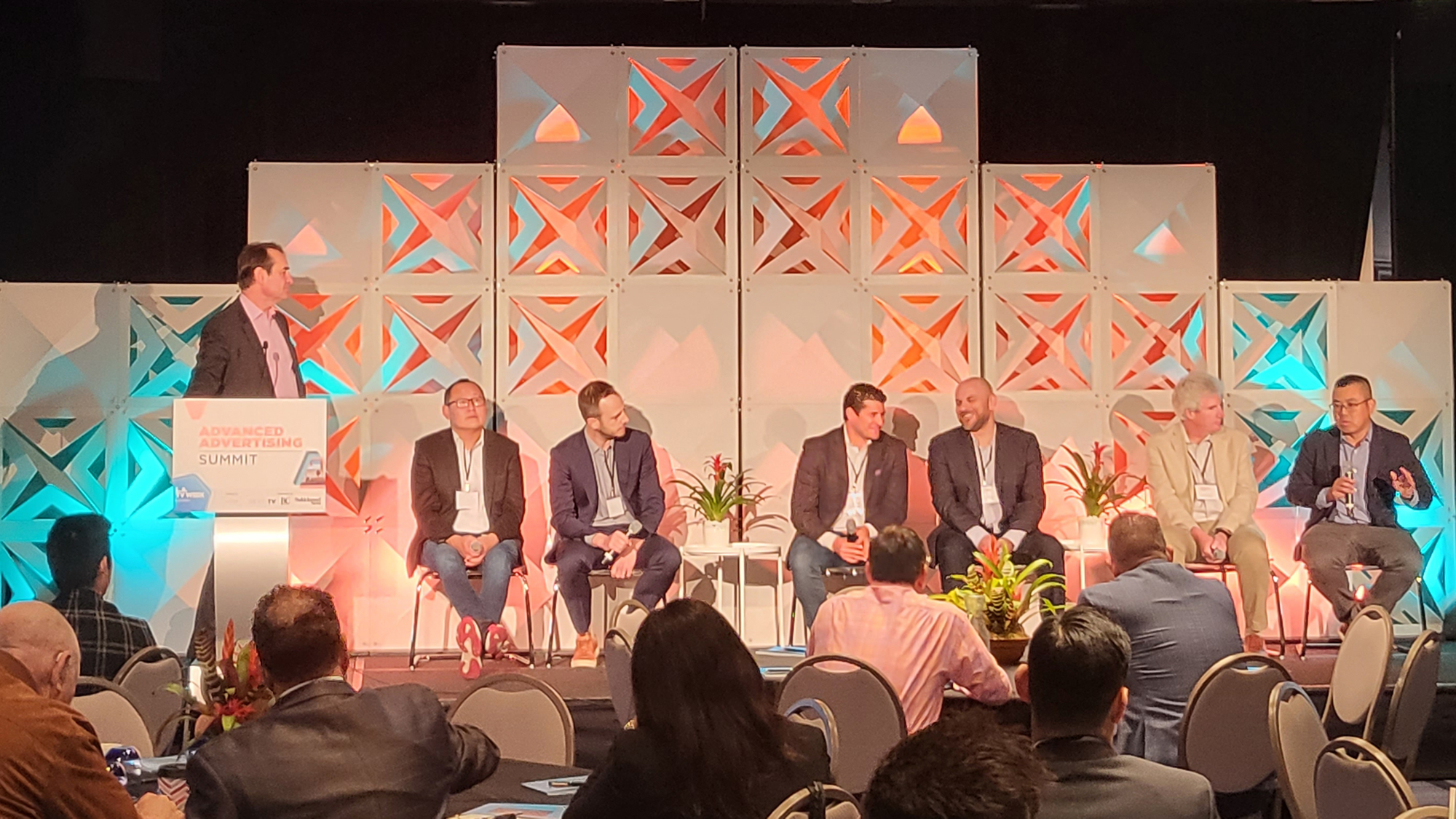Advanced Advertising: Addressable Ads Are In Demand But Need More Help
Advanced Advertising Summit panel was optimistic but realistic about competing interests, complications

A lot more cooperation is needed for national, individually addressed TV ads to grow, even though there’s big demand for it. That was clear from a panel at the Advanced Advertising Summit, where it was said the addressable-ad spend was perhaps $4 billion to $5 billion a year and unlikely to hit $10 billion anytime soon. The 60 million potential addressable homes isn’t likely to be fully saturated at 90 million anytime soon, either.
“We’re just tapping into the surface of it even though we’ve been at it a while,” Tony Yi, executive VP of business development at Cadent, told B+C business editor Jon Lafayette at the summit panel. Yi said “people tend to overcomplicate addressable, especially linear [network] addressable.”
Muhammad Eldereiny, VP/group director, national video/audio investment strategy at RPA, the ad buyer on the panel, said he would steer 100% of advertisers to addressable ads, because they’re effective, but it’s too complicated to get into enough homes to keep clients happy.
Also: More Coverage From L.A. TV Week
“Right now it’s super fragmented” to run addressable campaigns onto different distributors that don’t have the same technology, Eldereiny said. “It takes a long time.” RPA clients are definitely interested, though. “They like it, they just don’t know how to get there and we don’t know how to help them get there. Yet.”
Kent Tseng, VP of product management — advanced advertising at TelevisaUnivision, said being complicated makes going addressable a harder sell than if it was simple to do. “No one wants to be dealing with, ‘oh, this is very hard operationally and creating just a lot of time and operational headaches for us to execute against it.’ The easier we can make it, the better for everybody.”
The panelists were positive overall that addressable ads will reach their potential over time. Or at least growing half its current size in a couple of years if things go right, Yi said.
The smarter way to stay on top of broadcasting and cable industry. Sign up below
Bruce Anderson, the CEO and global chief technology officer at Invidi, said there was hope for enough demand by advertisers to push for common solutions among different platforms. Invidi works with DirecTV, Dish Network and Verizon Communications but not with Comcast or Charter Communications, for example. Smart TV makers, and soon enough Roku, have their own platforms, fragmenting things further.
With the caveat that it’s been wrongly predicted in the past, Anderson said, “I really do think we are at the precipice of actually making this be an easily transacted part of the total business model of advertising on TV. I’m looking forward to actually seeing this happen.”
Distributors are the key to making a nationwide buy possible, and those distributors are reluctant to share the data that advertisers need without being sure it’s secure, said Jason Manningham, the co-founder and CEO of Blockgraph, a company aiming at that data protection and backed by Comcast, Charter and Paramount (a big addressable backer). “I think data is the next battleground,” he said.
When it works, addressable ads are not only sent to the right people, they are shown often enough to build recall but not so often they become annoying, said Matthew van Houten, senior VP, product, ad ops systems & services and business development at DirecTV Advertising.
He read some numbers from an addressable campaign DirecTV did in the last quarter for a pharma company trying to reach asthmatic viewers. The addressable ads generated a 27% lift in new-patient signups and a 66% lift in refill rates versus a control group, he said. Addressable campaigns have the highest renewal rate of any at DirecTV, he said.
“When it works it's a beautiful thing,” van Houten said. “More collaboration, that's what we need. We’re going to keep plugging away at that.” He added: “Let’s get to 90 million, let’s do it.” ■
Kent has been a journalist, writer and editor at Multichannel News since 1994 and with Broadcasting+Cable since 2010. He is a good point of contact for anything editorial at the publications and for Nexttv.com. Before joining Multichannel News he had been a newspaper reporter with publications including The Washington Times, The Poughkeepsie (N.Y.) Journal and North County News.

